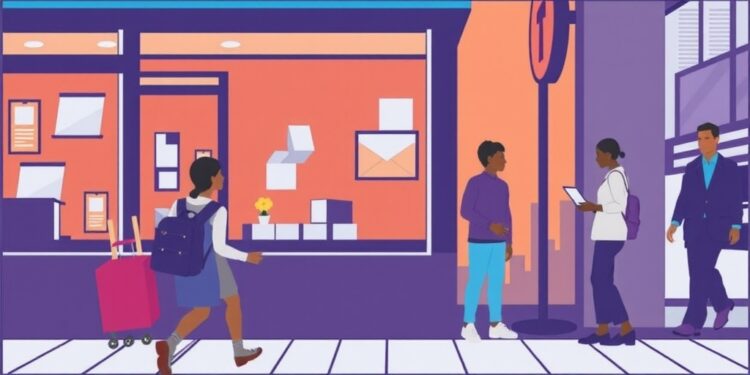Recent research published in the esteemed journal Contemporary Economic Policy has unveiled significant correlations between increasing minimum wage levels and a marked decline in summer employment opportunities for college students. This study, originating from a comprehensive data analysis involving work records from Washington State, suggests that as state minimum wages rise, college students—often reliant on summer jobs to support their studies—face reduced employment prospects during the pivotal summer quarter.
The implications of this research are particularly poignant for students who fall into specific categories, such as non-local individuals and those with minimal to no prior work experience. This demographic appears to bear the brunt of the impacts associated with increases in minimum wage, highlighting not only economic trends but also the complexities of labor economics regarding inexperienced workers entering the job market for the first time.
The findings offer a vital perspective on labor market dynamics, particularly during a season that many students view as crucial for building work experience and financial independence. Adam Wright, PhD, a key contributor from Western Washington University, emphasizes that this study provides some of the first concrete evidence regarding the effects of wage boosts specifically on inexperienced workers. Wright reinforces the notion that rising minimum wages could inadvertently lead to reduced job availability, countering the widely-held assumption that higher wages automatically increase employment opportunities.
Furthermore, the research underscores the necessity for further exploration into this area. Various hypotheses could explain the observed trend, warranting deeper investigations into the relationships between minimum wage policies and employment outcomes for college students. Future studies could delve into factors such as employer responses to wage hikes or the broader economic conditions that intersect with these employment patterns.
Understanding this dilemma becomes increasingly critical as the current discourse surrounding minimum wage legislation continues to dominate economic policy discussions. Lawmakers and educational institutions need to collaborate to ensure that students do not lose out on vital employment experiences, which contribute significantly to their professional growth and future job market success. Moreover, this study holds implications beyond the immediate impacts on students; it may spark further conversations about the sustainable design of wage policies that simultaneously support workers while providing job opportunities.
As the findings become more widely known, they carry the potential to influence both public perception and policy agendas aimed at balancing fair wages with employment accessibility. Students who typically rely on seasonal work may find themselves in an even more precarious position should these trends continue, emphasizing the urgency behind understanding labor economics in the context of education and youth employment.
In an age marked by increasingly complicated economic conditions, the challenges posed to students entering the workforce during essential seasons like summer cannot be overlooked. This research highlights the often-overlooked consequence of minimum wage increases and pushes the discussion towards crafting more nuanced approaches to wage policy, taking into account the unique circumstances faced by young, inexperienced workers.
Additionally, it’s important to consider how these findings resonate within the broader context of the economy. Economic theory posits that minimum wage increases can lead to higher operating costs for businesses, which might then necessitate a reduction in hiring or workforce downsizing, particularly when profit margins are thin. Students, therefore, may not only find themselves competing for fewer positions, but also increasingly contend with employers prioritizing experienced candidates or adjusting their hiring practices to mitigate financial strain.
Perhaps one of the more profound outcomes of this research is its ability to challenge preconceived notions surrounding the impacts of minimum wage increases. It paints a nuanced reality where economics does not function in isolation; instead, it interconnects with social systems, educational institutions, and individual experiences—each of which deserves scrutiny as policymakers consider legislative changes.
As this dialogue evolves, it serves as a call to action for academia, industry professionals, and government entities alike. If minimum wage policies are to champion the cause of economic equity and empowerment for emerging workers, then it is imperative to safeguard against potential adverse effects that may counteract those goals. This research underscores a critical juncture at which social advocacy and economic policy must converge to foster environments conducive to learning and growth for students.
Ultimately, the research sets the stage for future inquiry and reflection. The relationship between minimum wage increases and student employment should not only inform current policy discussions but also encourage a rethinking of labor pathways for young individuals entering an ever-evolving job market. Addressing these issues may yield not only theoretical advancements in economics but also real-world benefits for students aspiring to elevate their career trajectories through valuable summer employment opportunities.
Thus, as academic and policy circles continue to digest this groundbreaking research, it offers a promising avenue for investigating the intersections of economics, education, and youth employment in a changing labor landscape. Equipping young workers with necessary tools and opportunities will require concerted efforts that transcend traditional policies, paving the way for a more inclusive and accessible labor market.
Subject of Research: The impact of rising minimum wages on summer employment opportunities for college students.
Article Title: Dude, Where’s My (Summer) Job? Minimum Wages and Student Employment.
News Publication Date: 22-Jan-2025.
Web References: Contemporary Economic Policy
References: DOI 10.1111/coep.12687.
Image Credits: N/A.
Keywords: Economics, Labor market, Minimum wage, Employment, Students, Policy analysis, Youth unemployment, Economic equity.




